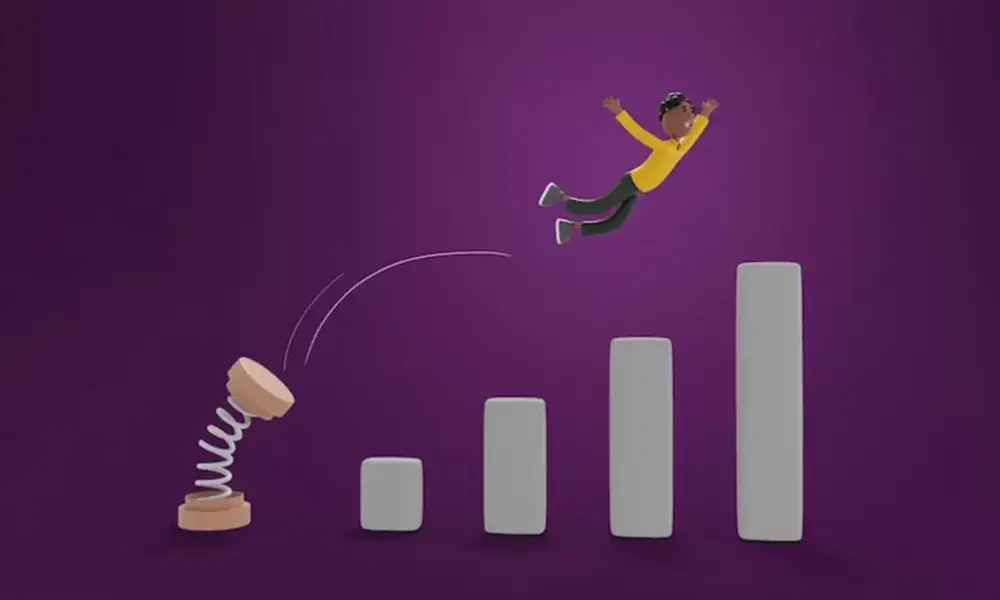What is Bounce Rate, and how to improve it?
The bounce rate in SEO frightens website administrators worldwide. The concept that visitors would visit your site, look at your material, and then depart without participating is every person’s worst-case situation. You have no control over who leaves your website. Visitors eventually leave, but there is a distinction between your departure rate (unavoidable) and your bounce rate (which you can control). Let’s break down the notion and look at how you can maintain your bounce rate low while increasing conversions.
What exactly is the bounce rate in SEO?

Generally, a bounce rate estimates the number of viewers to a certain website that leaves after reading a single page, represented as a percentage. This bounce rate is tracked for you by the bounce rate Google Analytics (GA) monitoring program. Simply, they nearly quickly “bounce” out of your site.
Google Analytics estimates the bounce rate of your website by dividing the total number of sessions per page by the total number of page views. To access this statistic, navigate to the Analytics audience menu and select the “Overview” option. This will tell you the overall bounce rate for your website. You may also track and segment particular pages.
Surprisingly, many attractively designed websites can have amazingly high Bounce Rates.
Exit rate compared to bounce rate
Bounce rates in SEO are not the same as exit rates. Exit rates are the percentage of users that leave a website without seeing any additional pages. In simple terms, the exit rate is the percentage of page views that were the session’s final page views. Bounces are essentially simply a subset of exits.
A “thank you” page, for example, presented after the client makes an order, is likely to have a high departure rate. If the page had a high rate of bounces, it indicated that individuals arrived there without having viewed other pages on your web page or purchased anything.
Why bounce rate in SEO is important?
As stated earlier bounce rate is important website bounce rate is important. A high rate indicates an inadequate user experience and decreased site revenues from visitors who abandon your site without buying anything. Knowing the bounce rate is crucial for optimizing your site’s conversion rate. When determining who views your page, Google considers your rate. When someone takes the time to visit many pages on your website, it means they found your information engaging and valuable.
Does a high bounce rate affect SEO?
The bounce rate is an essential statistic that shows the proportion of visitors that arrive at your site and then depart or “bounce,” generally by hitting the “back” button to return to their prior search results or closing the browser entirely.
Websites with high bounce rates have a significant impact on SEO performance. Google and other search engines interpret a high bounce rate as lousy content.
Why should you lower your website bounce rate?
It became evident that bouncing visitors could be a better use of time. They are people that came to your website after a long digital trip and then departed without interacting.
In Digital Marketing, engagement is considerably more important than numbers. It makes little difference if you have a million visitors daily and none result in a single conversion.
The bounce rate in SEO is as essential as optimization is essential. A solid rate approach may help a firm enhance conversion rates using the same digital strategy and financial resources. It is a faster and easy approach to broaden your reach.
How to reduce the bounce rate
With all this in mind, any endeavor to reduce the bounce rate is always good and should be undertaken as soon as possible.
A few tips are mentioned below to reduce rate high rate of the website.
Try to figure out why visitors are leaving so early
Visitors are strolling into your store, glancing around, and heading out. What is the first question you have? You should be wondering what pushed them away.
Is there any problem with the layout of the web store? Was there a mismatch between what they were expecting and what they found on the inside? Were the proposals withdrawn? Perhaps the people you’re reaching are interested in something other than your brand.
Each answer you find will give you a greater understanding of what to be done to improve your rate. Consequently, it is critical to determine your audience profile and build your approach on it.
Improve the user experience
All the inquiries raised above will direct your staff to identify tools and procedures that enhance the user experience.
A successful user experience begins with a speedy and organized website, but it extends far beyond that. The combination of visual components, content, and interactivity meets and surpasses specific expectations.
Consider your buyer profile as a point of reference and think from the viewer’s point of view. What do visitors desire as they visit your site for the first time? What exactly are they searching for? How can you positively guide and even surprise them?
A rewrite of your pages is required to make them more interesting.
Make certain that your website is mobile-friendly
Considering most people use online resources via mobile devices, a website should be responsive to mobile devices.
Many bounces occur when a person accesses your site but cannot browse or see part of the content. A dynamic site adapts to any of these variances, ensuring that you don’t lose views due to such a minor issue.
Include a strong call to action
Refrain from doing anything that would mislead your visitors when attempting to lower the rate. This involves making your call to action overly complicate.
For instance, you must prevent clogging up the landing pages with many CTAs. Choose one definitive action you’d like visitors to perform, make it extremely obvious, and be honest about it. You should also consider where you want your CTA to be placed.
Consider inserting your CTA in this section so that users can immediately see your page’s goal.
Conclusion
A Bounce Rate in SEO is an indicator for determining a user’s involvement. It indicates in no uncertain terms if a user can browse your site and whether your content entices them to proceed through. As you become more familiar with analytics tools, you can begin to split data by traffic source and rapidly notice insights, such as whether viewers from social properties or referring sites are diving into your material.





